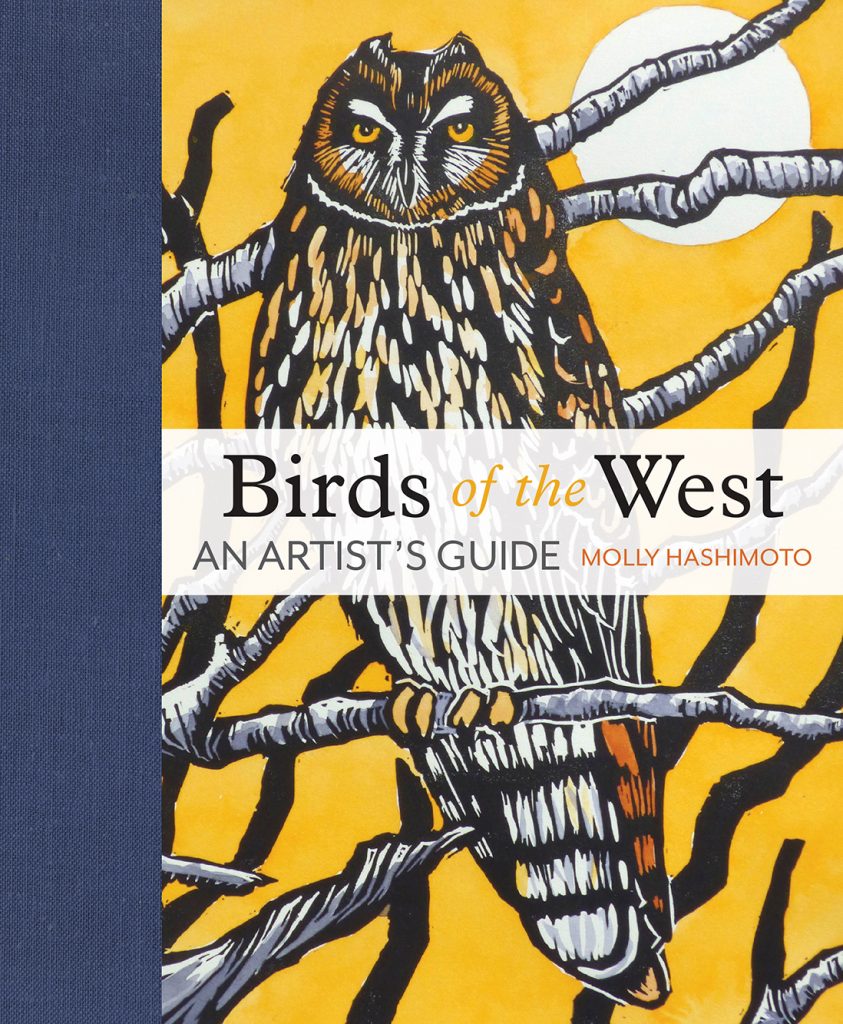
by Anne Kilgannon – The brown pelicans arched, glided and exploded in steep dives slicing into the waves off the Westport jetty. The geometry of their wings and spear-like beaks appeared as strong brushstrokes against the blue sky, a zig and zag in the moment before their plunge into the water. The image stayed with me. A photo, even if I had been quick enough to capture their actions, would not have expressed their agility and strength; some other medium was needed to evoke their power and speed. Perhaps a heavily loaded sumi-e brush applied in deft strokes? I could only wonder.
I am not a painter but wished then that I had that skill to convey my feelings of awe, of the majesty of the pelicans. I thought of how drawing or painting them would help me understand and remember how their bodies fit together, the shape of their wings, the curve of neck and capacious reach of those tremendous bills. I wanted to recall the color of their eyes and mottled appearance of their feathers. If I could witness these birds as an artist might, what new things would I see, what truths would I learn?
Serendipitously, a friend brought me a book I must see: Birds of the West, by Molly Hashimoto. Here was a way into my yearning for another way of seeing birds.
I was captivated by the engaging text about birds she had seen but even more so by the art Hashimoto had made, inspired by these encounters. Page after page is filled with striking images of her portraits of birds captured in watercolor, block prints, etchings, and quick pencil sketches. She is foremost a working artist, responding with delight to the line, color and form of birds as experienced in different settings, but generously also, she is a teacher eager to share her techniques and insights. This book is a gift of both impulses.
Hashimoto is explicit in describing how to dip a brush in paint or work her gouge to create the bold lines of a relief print. She offers painterly tips about tricks of the trade for creating different thicknesses of line, blocks of color, space and form. All these methods and materials are used in the service of expressing the nature of a particular bird and the moment of its discovery. Reading her instructions and studying each example of her art is a mini course, a kick-off in finding expression in art forms.
Hashimoto pairs each of her created images with an anecdote of where she saw the bird, how it entered her imagination, and what it meant to her. In her art, she takes care to place each bird in its natural habitat, emphasizing how inseparable any creature is from where it lives. The bird images are sorted by the various types of environment that shelter them, from ponds and wetlands, woodland and meadows, beaches and deserts, to tundra and mountain terrains, and—not forgetting where most of us see birds daily—our urban backyards. The groupings emphasize Hashimoto’s habit of seeing birds in place, of a place.
Anything that serves to wake us up to the wonders around us is uplifting and even magical. Hashimoto makes us see birds in new ways. We study them with freshened eyes. The writing style and show-and-tell format is like a long conversation with an inspired teacher who is gently but firmly encouraging us to pick up a brush or pencil and study birds through making art. Pelicans might just be the beginning of something!







